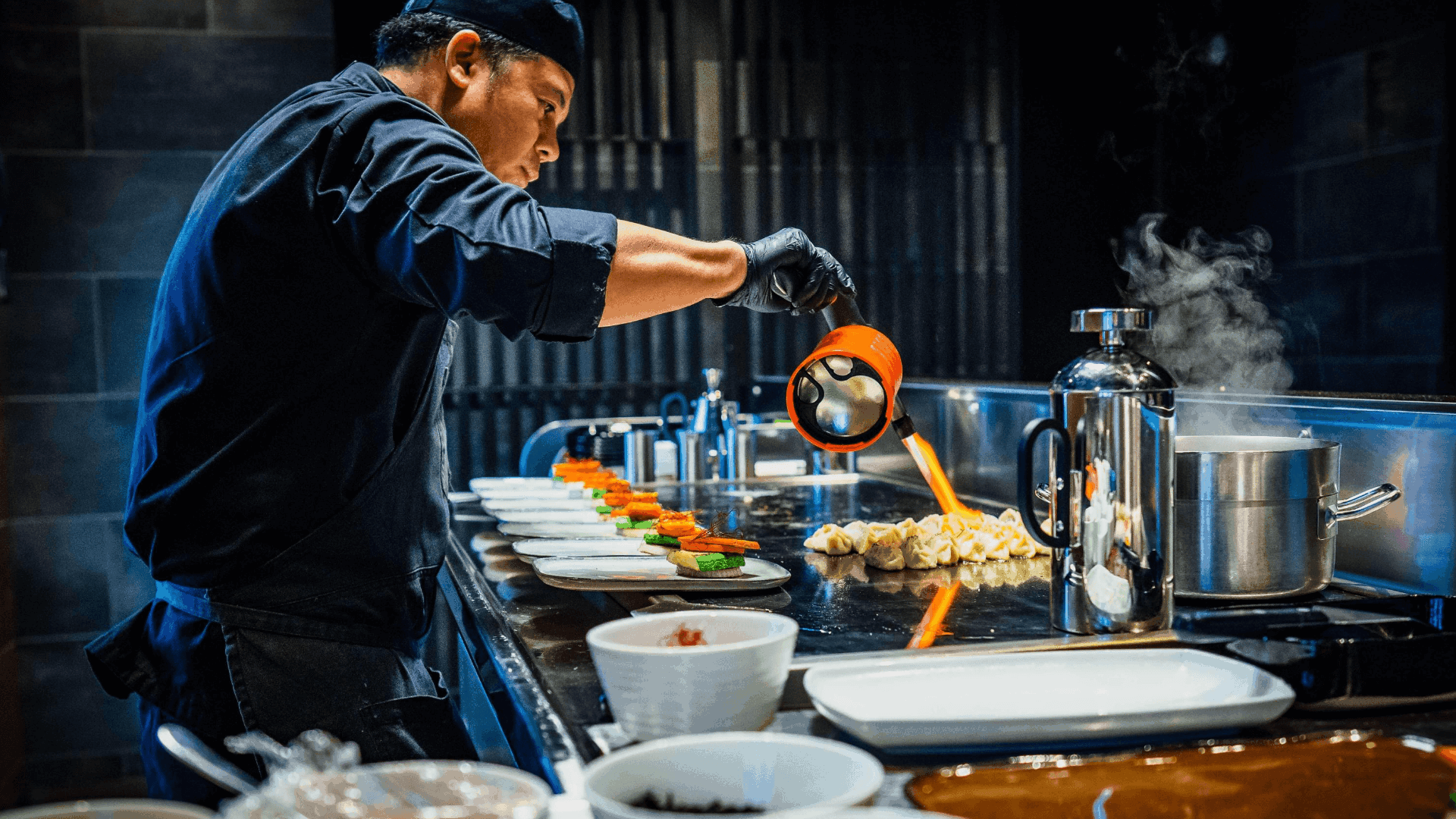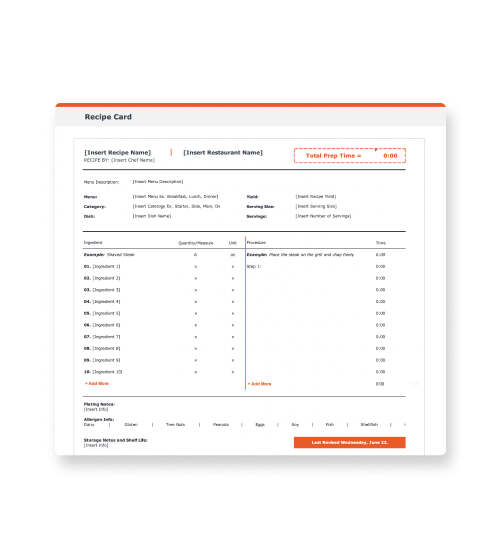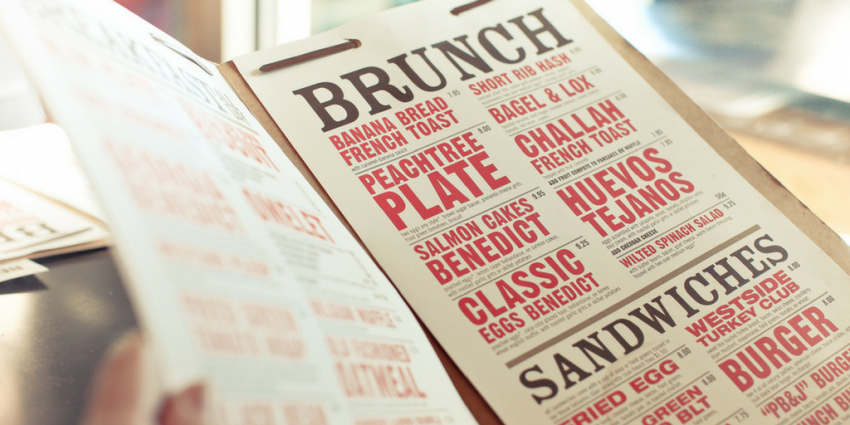
How to Create Restaurant Recipe Cards [Templates]
Restaurant recipe cards are a simple tool to help train new kitchen staff, minimize food waste, and make your restaurant more profitable.
Dahlia SnaidermanAuthor

Recipe Card Template
Train your team with this recipe card template, a customizable Excel sheet that outlines recipe requirements for chefs and back of house staff.
Get Free Download | Built for Restaurants
| Built for RestaurantsPeople come to your restaurant for plenty of reasons: they love feeling taken care of, they love not having to cook or clean up, they love the vibe of your space, and — perhaps most importantly — they love the food cooked by your back of house staff.
Of course, it’s important for the dishes prepared by your cooks to be well-seasoned and exceptionally delicious, but it’s also important that the dishes always be consistent. For regulars who have a favorite dish, it shouldn’t matter which cook prepared it — that marinated tuna tostada needs to taste exactly like it did last week.
With great training, your cooks can learn to prepare each dish on your menu flawlessly every single time. And one of the most important elements of staff training is having a collection of restaurant recipe cards (and/or a recipe binder) for cooks to refer back to.
Recipe cards aren’t just a helpful learning tool: they help ensure that your food costs stay under control, they help reduce food waste, and they ensure consistency — leading to a stronger bottom line and happier customers.
What are restaurant recipe cards?
Recipe cards are 4x6 inch index cards that describe all the crucial information about every recipe in your restaurant. Because restaurant kitchens are full of splatters and spills, most restaurants laminate their recipe cards and keep them in an easily cleaned recipe box.
For each recipe card, include the following information:
a list of ingredients
basic preparation instructions
plating notes
Some restaurants will opt to include even more information about each menu item, including:
allergens
prep time
storage notes
drink pairings
If you’re not into the card stock format, you can also print your recipes on paper and store them in a recipe book or binder — it just depends on what’s more practical for your restaurant kitchen. Another option is to use an online index cards platform to create digital kitchen recipe cards that cooks can access anywhere as they’re learning the menu.
However, the benefit to the small, physical notecards is that they’re easy to use as a learning tool at the restaurant — just like the ones used to memorize course content at school — and they don’t encourage your cooks to be on their phones during work (which can be unhygienic).
Restaurants used to use blank recipe cards to write down their recipes, but that’s extremely time-consuming, and if a card gets lost or damaged, you’d need to rewrite one. Today, restaurants use printable recipe card templates like the one below. Just download the template, fill in all the recipes on your restaurant menu, and hit print — you’ll be ready to go with your modern recipe cards.
Recipe Card Template
Train your team with this recipe card template, a customizable Excel sheet that outlines recipe requirements for chefs and back of house staff.

Why should you use restaurant recipe cards for training?
Recipe cards help staff learn how to cook every dish consistently, ensuring food costs are controlled and that dishes always come out exactly as a guest expects — whether they’ve eaten that dish before or they just saw a photo of it on Instagram.
For new kitchen employees, it’s always a relief to see that a kitchen has an up-to-date collection of recipe cards (or a recipe binder). They’ll know they can easily refer back to a recipe card if they’re in the weeds and can’t remember if a particular sauce should include 2 or 3 tablespoons of mirin. Recipe cards can also be helpful for more introverted cooks who prefer to check a recipe instead of asking a busy chef for guidance.
For chefs, managers, and owners, recipe cards are a useful cost-saving, waste-reducing measure. If every cook knows that each plate of mussels should be served with exactly one ladleful of broth, management can better predict the yield of every batch of broth — and their food costs overall.
And to accommodate customers with allergies, recipe documentation is crucial. If a new server isn’t sure what allergens are in a particular dish, they can consult the recipe card — or even bring it out to show the customer.
Stephen Hightower, managing partner of City Hospitality Group, uses recipe cards at all five of his restaurants. “The end result of using recipe cards is that we do everything the same way every time. The recipe is costed out properly, we eliminate waste, and the business makes more money,” he explained.
How to make your own restaurant recipe cards
Step 1: Assemble all the information for the recipe cards
Get ready to fill in a recipe card template with all of the following information:
Name of dish
Prep time — When BOH knows how long a dish will take, they can find the best way to fit that prep into their day.
Category — is it a breakfast, lunch, or dinner item? Starter, main, or dessert?
Serving size details — Include the recipe yield, the serving size, and the number of servings — this helps curb food waste and inconsistent portion sizes.
Ingredients — Always include the quantity and measurement for each ingredient listed, and stay consistent with the measurements you use.
Procedure — Use as much detail as your cooks require. Step 2 explains a few ways to approach this.
Plating notes and a photo
Storage notes and shelf life — How should it be stored? How long will it stay safe to eat if prepared in bulk?
Last revised date — That way, employees know if they’re looking at the most current information.
Step 2: Decide on a format and level of detail for your recipe cards — and fill in your template
Depending on the level of experience of your staff, you may be able to use industry shorthand that keeps the text on the cards to a minimum �— making it easier to scan quickly. However, if you hire and train staff with no kitchen experience, you may need to scale the font size down and include more information.
Here’s how instructions could differ depending on your writing style:
For an experienced team: Cook custard in a bain marie at 200° for 1 hr. Garnish with chiffonade basil.
For a less-experienced team: Place ramekins of custard in a pan of hot water 1-2 inches deep. Bake at 200°F for 1 hour. Stack leaves of basil, roll tightly lengthwise, and slice into thin ribbons. Garnish custard with the basil strips.
Experiment with a few different layouts, font sizes, and writing styles. Different dishes will have more or less complex recipes, so specific dishes may need multiple cards, or its components will need to be split onto different cards.
You can also choose to include a glossary for culinary terms at the back of your recipe binder.
Step 3: Get an employee to test the recipe cards
Have a cook test out the recipe cards. Ideally, you could work with a newer cook without experience cooking the recipe, but if that’s not possible, it’s okay — just get someone who isn’t you or the chef to make a dish by referencing the procedure on a recipe card. If the dish doesn’t come out right, you’ll know something is likely missing or not worded clearly.
This is a time-consuming step, but it’s important to verify that if a cook has to go back and check out a recipe card, that they’re getting the correct information.
How to incorporate restaurant recipe cards into your BOH training
Laminate and organize your recipe cards. Emily Dyer-Schiefer, owner of the hospitality consultancy The Kitchen Think, opens four to five restaurants each year. Every single one uses recipe cards to train kitchen staff. “The cards are printed and either framed or laminated and hung in the kitchen. New hires receive a training pack with the cards in them. They’re also trained on each dish and will need to recreate each dish in their section without guidance, using only the recipe cards, before they are left alone on that section.”
Make sure your recipe cards are easily accessible. The easier it is for staff to access them, the more likely they are to use them. Print and laminate your cards or put them in page protectors in a binder to save them from greasy fingerprints and other kitchen hazards. You can also share the unprinted digital file full of your recipes with all of your staff, so they have a backup recipe binder that lives on their phones.
Also, remind your kitchen team that recipe cards are created for all staff, whether they’re new or not. The cards are there to ensure recipes always stay consistent from day to day and cook to cook - even if a cook thinks they have everything memorized.
Stephen Hightower from City Hospitality Group says “every one of my cooks uses recipe cards. It’s not an easy thing to keep a dish consistent, and my cooks take a lot of pride in the challenge of making a dish right every single time.”
Restaurant Cost Control Guide
Use this guide to learn more about your restaurant costs, how to track them, and steps you can take to help maximize your profitability.

Free recipe card design tools for restaurateurs
Canva is a free web-based design service that caters to those of us who excel in areas other than graphic design. Its drag-and-drop feature, recipe templates, and library of graphics mean you can easily put together recipe cards that are functional and visually appealing. You can also create your recipe cards in Microsoft Word or Excel.
If you don’t have the time or energy to design your own recipe cards, our free downloadable recipe card template has everything you need. Use it to create recipe cards that will enhance your BOH training and stabilize your profits by cutting down on waste and incorrect portioning. Grab the template below.
Related restaurant cost resources
Back of House Management Guide and Resource Kit
This guide and resource kit will help you develop an efficient back of house management system to ensure quality and consistency in your restaurant’s kitchen.

Is this article helpful?
DISCLAIMER: This information is provided for general informational purposes only, and publication does not constitute an endorsement. Toast does not warrant the accuracy or completeness of any information, text, graphics, links, or other items contained within this content. Toast does not guarantee you will achieve any specific results if you follow any advice herein. It may be advisable for you to consult with a professional such as a lawyer, accountant, or business advisor for advice specific to your situation.
Read More
Subscribe to On the line
Sign up to get industry intel, advice, tools, and honest takes from real people tackling their restaurants’ greatest challenges.
By submitting, you agree to receive marketing emails from Toast. We’ll handle your info according to our privacy statement. Additional information for California residents available here.



